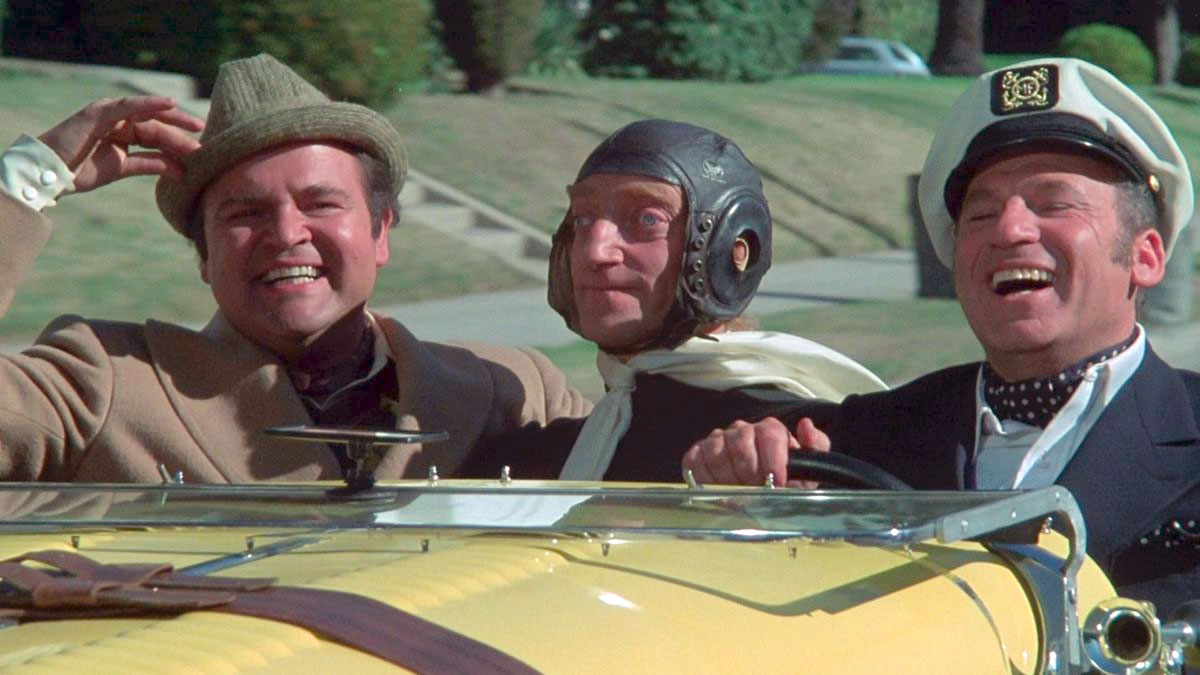Filmmakers’ love for silent cinema has held on throughout the post-Vitaphone decades, and the form has popped up from time to time. I say “form” and not “medium” as the definitions of Silent Film I’ve been discussing are not always followed. Sometimes this is deliberate, sometimes through inadvertent following of a conflated (mis)understanding of the medium, and sometimes by acknowledging the visual and pantomimic traditions of silent movies’ storytelling.
I’m not talking about compilation features like Harold Lloyd’s World of Comedy (1962) or the ones made by Robert Youngson, like Days of Thrills and Laughter or When Comedy Was King. I’m referring to attempts to make new silent movies. The next group of blog posts will cover these films as well as the films made that are wordless. These are the films people will tell me about because they know I like silent movies, whether they’re suggesting I check out Blancanieves (2012) – a new silent film– or All Is Lost (2013) with Robert Redford – in which Redford has almost no dialog. And I’ll throw the recent episode of Only Murders in the Building (2021 – episode 7, “The Boy in 6B”) in which there is no dialog spoken or heard (there are sequences signed in ASL with subtitles) until the show’s final 5 seconds.
There is a lot of power and expression in leaving dialogue out of a synch-sound film, for the whole film or for segments of it.

There have been films made that are loving tributes to silent cinema like Carl Reiner’s The Comic (1969) or Blake Edwards’ The Great Race (1965) and attempts at the medium itself like Michael Hazanavicius’s The Artist (2011). I’ll cover the wordless or less-worded synch sound films for the sake of inclusion, as the artists who made them were heavily influenced by filmmakers and performances from the silent era.
I’ll also discuss the films that have been made deliberately to resemble their pre-1930 counterparts, and why I think it may be that while some of them have met with critical or popular success they have all been one-offs and have not spawned any sort of resurgence of the medium of Silent Film itself. Some of these have been more successful at adopting or expressing the medium aesthetically than others.
In all of these cases, the playing with the audience’s or viewers’ expectations of reality and invitation into a more right-brained screen experience is at the core, whether it was intended or aware-of by the films’ makers or not.
The first post in this series is here.
The previous post (#57) to this one is here.
The next post, The Silent Comedians Hang On, is here.

Maybe fun to include an episode from TV series “Buffy The Vampire Slayer” titled THE GENTLEMEN (Season 4, ep. 10) where all the characters lose the ability to speak for most of the show. Funny and creepy !
Oops, it was actually titled “HUSH”. The bad guys were The Gentlemen !
Yes, this is definitely a sub-genre within the sit-com realm. Sometimes characters go to a retreat and have to take a vow of silence, etc.
I’ve noticed many “staples” in Silent Film Comedy, things not found in silent film dramas. One is getting wet: I’ve yet to see a SFC in which someone doesn’t either get squirted or downright drenched (i.e., Charley Chase squirted in the face by the fake flower seen 10/3 Watch Party; Chaplin’s ‘park and pond” films; or Ollie submerged in puddles, etc.). I hope Jerry Lewis will get a shout-out in “What happened….” blogs. Jerry carries over many Silent Film Comedy traditions (ex: “The Bellboy”); for instance, in just about every JL movie, there’s a drenching of some kind